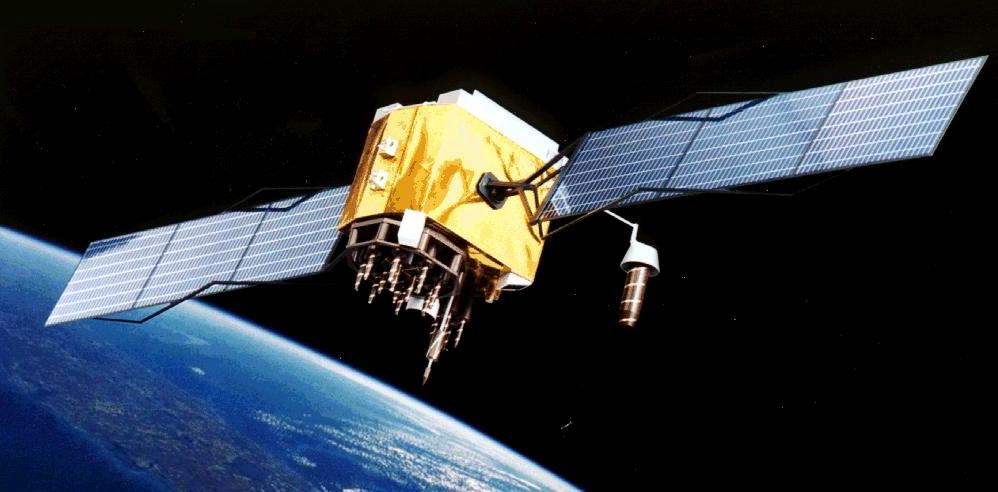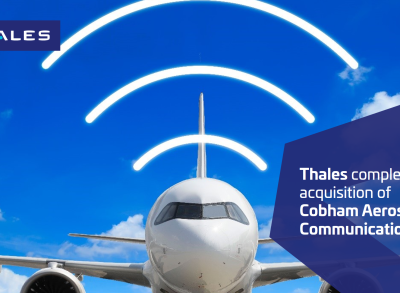Robust security protection for GNSS satellite signals
Thales has designed GNSS receivers for civil and military aircraft for more than 20 years. Today we have the expertise to counter an expanding array of security threats and all the credentials we need to take part in new satellite navigation programmes. We talked to Pierre Bouniol, GNSS Product Line Manager, and Marc Revol, GNSS Design Authority.

GNSS (Global Navigation Satellite System) encompasses the GPS (USA), Galileo (Europe), Glonass (Russia) and BeiDou (China) satellite radionavigation constellations. Combined with satellite-based augmentation systems (SBAS) at both regional levels (WAAS, EGNOS, MSAS, etc.) and local levels (GBAS, etc.), they are helping to make air operations around the world safer and more secure.
What is Thales’s role in GNSS?
Thales has delivered more than 10,000 GNSS receivers to date. They’re installed on civil aircraft and helicopters (Airbus, ATR, S-76, etc.) as well as combat aircraft, military transports, surface vessels and missiles. We also have a product line, including a dedicated antenna and signal filtering unit, to counter GNSS signal interference and defeat hostile jammers. Our GNSS Securing products also include systems that provide overt or covert protection to GNSS applications and warn users when signals are subject to interference or jamming. As well as air operations, these systems are used to secure a whole range of sensitive sites and high-value installations.
Is the Galileo programme part of the GNSS constellation?
The objective with Galileo is to deploy a constellation of 27 satellites between now and 2020, with a frequency and signal structure similar to GPS. To date, six satellites have been launched, including two in March this year, and another launch is planned later in the year.
The Galileo constellation will be an integral part of existing GNSS services. It’s a European project that began with design definition studies in the early 2000s. Galileo will offer open-access services, which could be used for aerospace applications, commercial navigation services for professional applications, a public regulated service for government and military applications, and a search and rescue service, designed to locate distress beacons, including aircraft beacons.
Thales is involved in all aspects of the Galileo programme. Our developments for the space segment include the signal generator payload, and we're also working on the ground segment that monitors and controls the constellation, and the user segment, which uses our onboard receivers.
How can you ensure GNSS signals are jam-resistant?
GNSS signals at Earth’s surface are very low power (10-16 watt). As a result, a GNSS jammer rated at 1 watt could block signal reception anywhere within a 50 kilometre radius. That's why we need ways to thwart attempts to jam the satellite signals. Our GNSS Securing systems are designed to identify jammers, locate them and then eliminate the jamming signal using digital models. It started as a military requirement, but today virtually everyone uses at least one GPS-based receiver, so anti-jamming has entered the mainstream.
Satellite signal security is crucial for aircraft landing approaches, enabling airlines to serve airports anywhere in the world and ensure data integrity.
What happens if a GNSS signal fails?
In the case of severe jamming or a constellation failure, backup systems are in place to ensure an optimal level of safety and control. Aircraft don't depend on GPS alone. They also use inertial navigation units and ground-based radionavigation systems for navigating and landing.
What are the keys to Thales’s leadership in this market?
Thales has built up a substantial body of knowledge and know-how in the last 20 years in both defence and civil aerospace applications. We develop both the hardware and the software and use extremely robust development processes.
Galileo is a hugely important project for Thales. In addition, the technologies we’ve developed for aircraft can also be used for road and rail transport as well as shipping, where there’s huge demand for secure positioning services.
Thales Alenia Space is the pioneer in European satellite navigation, as prime contractor for the Egnos augmentation system, the precursor to Galileo. We play a major role in its development, with system support for Galileo and a lead role in the in-orbit validation phase, not only through the first four satellites to be launched, but above all by building the Mission Ground Segment for the complete constellation.
Thales Alenia Space: a major partner in Egnos and Galileo programmes
Thales Alenia Space is the prime contractor to Egnos, the European satellite navigation system, designed to improve the positioning messages from the GPS system. Egnos was deployed starting in 2005 and started "open service" operation in 2009. Its "Safety of Life" service was declared operational in March 2011, allowing it to be used for landings and precision approaches to European airports, without requiring ground guidance equipment. As prime contractor for Galileo system assistance, Thales Alenia Space provides ESA with system-level industrial support, including system engineering, performance, assembly, integration and validation, as well as space signal engineering and product assurance and security. Thales Alenia Space is also prime contractor for the development and deployment of the Galileo Mission Segment (GMS) and the Galileo Security Facility (GSF) which will control the entire navigation system from the ground. Furthermore, Thales Alenia Space will supply the signal generation units and the antennas, two critical navigation payload components, for the 22 satellites already ordered to start the deployment of the constellation for full operational capacity (FOC).




